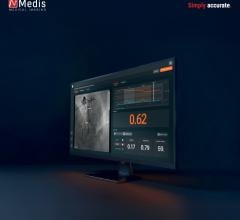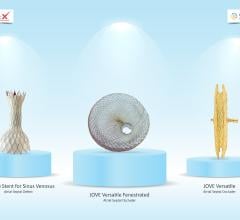
The White House’s recent approval of the Physician Payment Sunshine Act mandates transparency within physician-industry relationships. Data recording begins Aug. 1, 2013, so it is necessary for physicians and administrators to understand the implications of this section of the Affordable Care Act.
The penalties directly associated with failure to correctly report — an annual maximum of $1.15 million — will be charged to the applicable manufacturers. However, if uneducated about the processes and technologies necessary to reconcile reported transfers of value, physicians and teaching hospitals stand to risk a great deal.
Going forward, manufacturers of medical devices, pharmaceuticals or medical supplies will be required to report payments/incentives made to physicians and teaching hospitals. Physicians’ ownerships and investment interests must also be identified and reported. Those reports are to be submitted electronically to the Secretary of the Department of Health and Human Services (HHS) on an annual basis, the first of which is due by March 31, 2014. The aggregated reports will be searchable via an online public record.
As a result, the industry has been trying to identify best practices in aiming their processes and technologies for what is finally a confirmed, albeit ambiguous, target.
Background of Mandated Transparency
The purpose of mandated transparency, according to the Centers for Medicare and Medicaid Services (CMS), is to discourage inappropriate relationships and prevent unnecessary healthcare costs. The Medicare Payment Advisory Commission (MedPAC) made the initial recommendation that influenced this transparency initiative back in 2009, stating, “At least some [industry-physician relationships] are associated with rapid prescribing of new, more expensive drugs… [and] concern that manufacturers’ influence over physicians’ education may skew the information physicians receive.”
This contrasts the belief of some industry thought leaders that the federal government’s regulation of transparency is unnecessary because behaviors are already being successfully self-regulated. Industry ethical standards like PhRMA Code on Interactions with Healthcare Professionals and AdvaMed Code of Ethics have been encouraging ethical interactions and reasonable expenses between manufacturers and physicians since 2002 and 2004, respectively. While PhRMA Code and AdvaMed Code of Ethics are within the spirit of the Sunshine Act, an element of public education is now incorporated into those relationships.
Implications for Physicians and Administrators
Only CMS has the authority to impose fines on applicable manufacturers for failure to report timely, accurate information. The reported data, however, will be public record and aggregated into an easily searchable database. Additionally, CMS will be required to submit annual reports to Congress and each state.
This means that as of publication on Sept. 30, 2014, all the necessary financial evidence for any indication of wrongdoing will be placed directly in the hands of those who can take action. Like a mob boss being taken down for tax evasion, transparency could result in litigation and significant fines from other areas of the government — for everyone involved, not just the applicable manufacturers. Physicians also stand to risk their public image and reputation.
To ensure accuracy, CMS will provide an online portal to allow manufacturers and recipients to reconcile the reported compensation for a 45-day window prior to publication. The seamless communication between manufacturers and recipients is essential for agreement and accuracy of the reported payments.
“This is especially important once the payments are placed on a publicly available website,” according to Daniel Carlat, M.D., a psychiatrist and Prescription Project director at The Pew Charitable Trusts. “Physicians are very sensitive to their reputations, and they don’t want there to be payments that are inflated. They don’t want their patients and others to get the idea that they’re being somehow bought out by the pharmaceutical industry.”
This also means the office must be diligently maintaining records of all physician-industry interactions to be able to accurately verify if payments have been reported correctly.
Those records must also be easily accessible in case of a dispute. Manufacturers will have an additional 15 days to resolve disputes, attest and submit updated data. Disputes not resolved by the end of that 60-day period will be published as originally attested and labeled “disputed” to incentivize active, timely resolution. No extensions will be granted.
Paperless Technologies Streamline Reconciliation
Millions of transactions from healthcare industry events must be reported on an annual basis. For example, Advanced Health Media, a provider of technology services designed to manage physician-industry relationships, supports 240,000 promotional and speaker bureaus annually. Each year, the events this one company supports reach 1 million physician attendees.
A meticulous physician reimbursement process for any event can be cumbersome depending on the manufacturer’s compliance regulations. It can involve several forms, agreements and attendance verification several times throughout the day, resulting in lengthy reimbursement times and administrative costs.
After the event, the event planners conduct a reconciliation process for physician expense reimbursement. This begins when the physician submits a signed expense report. The physician needs to print, sign and fax these forms back to the manufacturer. The meeting planner conducts cross-references and data cleaning to ensure the expense accounting is correct. Once expenses are approved, the meeting planner reimburses the physician and bills the expenses back to the manufacturer. The expense reconciliation process relies on hundreds of physicians to fill out reimbursement forms accurately and completely.
Changing from a physical signature form to an electronic signature form greatly reduces the process time. The Social Security Administration (SSA) adopted an electronic signature process in April 2012 for form SSA-827, Authorization to Disclose Information to the SSA. Tony Notaro, Social Security’s Office of Health Information and Electronic Policy, stated that beneficiaries who use the electronic signature process of the SSA-827 save up to nine days in processing time over those who use the exact same form in its physical signature format.
Best-of-breed electronic signature solutions like DocuSign provide customizable templates for compensation agreements and expense reports. Form validation ensures only completed forms are submitted. Signer profiles that include the signer’s name, authentication level, photograph and GPS location at the time of signing add another level of security. Once forms are signed, the document becomes part of the physician and manufacturer’s document libraries.
For purposes of Sunshine Act audits, manufacturers will be required to maintain all documentation for a minimum of five years from the date of publication. Physicians may want to maintain records for the same period of time to be prepared for audits that stand to negatively impact their reputation. Electronic signatures make this requirement less of a hassle, enabling physicians to sign-off on all payments in a format that manufacturers can keep digitally for that length of time, easily accessible for audits with an additional level of accountability in this multi-million dollar sector of the healthcare industry.
While streamlining processes for compliance with the Sunshine Act, manufacturers and physicians should keep in mind one return that cannot be measured with standard ROI calculations — trust.
A Renewed Sense of Trust in the Healthcare Industry
“I think the main benefit is going to be a renewed sense of trust,” Carlat said. “The public believes that doctors are still often being given large gifts, that they’re taken out to sporting events, that they’re treated to Caribbean adventures on the drug company tab, and these things are very rarely happening now. They used to happen, but these days they happen very rarely, if at all. I think once transparency reports are published widely the public will understand that the vast majority of physicians who are taking payments are taking relatively small payments and that many of the payments are for completely legitimate activities.”
The details of the monetary relationships between manufacturers and physicians will soon be public knowledge. Patients will be scrutinizing those dollar amounts and the availability of information. Any lack of reporting will not only result in fines, but also patient scrutiny. Not being transparent is risky.
Editor's note: Ombud Inc. is an independent enterprise technology platform and research firm. Its team of researchers analyzes enterprise technology solutions and their affects on business processes. Ombud provides an interactive research platform to help technology buyers compare products, consult industry experts and research technology solutions for procurement. It acts as a third-party that coaches organizations on procurement decisions and engages organizations and vendors to ensure the success of their implementations. For more information, visit http://ombud.com/r/AH.


 May 14, 2024
May 14, 2024 








